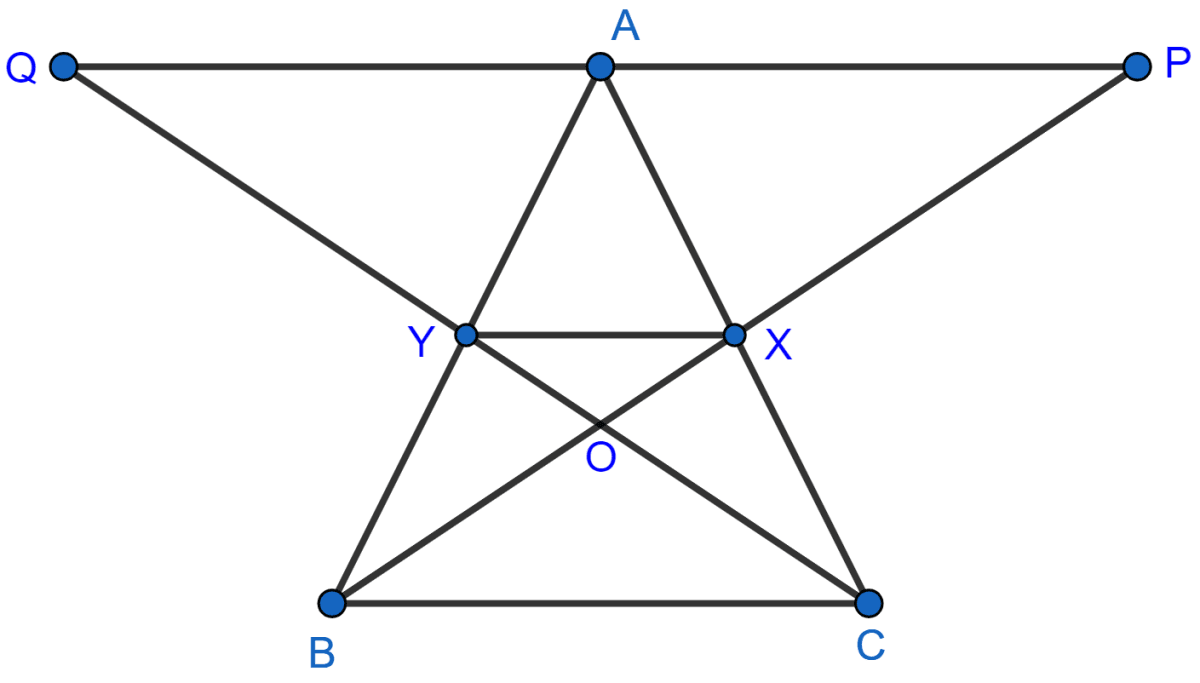Mathematics
In the adjoining figure, ABCD is a parallelogram in which BC is produced to E such that CE = BC. AE intersects CD at F. If area of ∆DFB = 3 cm2, find the area of parallelogram ABCD.

Theorems on Area
2 Likes
Answer
From figure,

BE is a straight line.
Since, BC || AD,
∴ CE || AD.
Hence, ACED is a parallelogram.
Diagonals AE and DC of || ACED bisect each other, so F is mid-point of DC.
So, BF is median of △BDC.
Since, median divides triangle into two triangles with equal areas.
∴ area of △BFC = area of △DFB = 3 cm2.
area of △BDC = area of △BFC + area of △DFB = 6 cm2.
From figure,
⇒ area of △BDC = area of || gm ABCD (As || gm ABCD and △BDC lie on same base CD and between same parallel lines AB and CD.)
⇒ 6 = area of || gm ABCD
⇒ area of || gm ABCD = 12 cm2.
Hence, area of || gm ABCD = 12 cm2.
Answered By
1 Like
Related Questions
Perpendiculars are drawn from a point within an equilateral triangle to the three sides. Prove that the sum of the three perpendiculars is equal to the altitude of the triangle.
If each diagonal of a quadrilateral divides it into two triangles of equal areas, then prove that the quadrilateral is a parallelogram.
In the adjoining figure, ABCD is a square. E and F are mid-points of sides BC and CD respectively. If R is mid-point of EF, prove that:
area of ∆AER = area of ∆AFR

In the adjoining figure, X and Y are mid-points of the sides AC and AB respectively of ∆ABC. QP || BC and CYQ and BXP are straight lines. Prove that area of ∆ABP = area of ∆ACQ.
